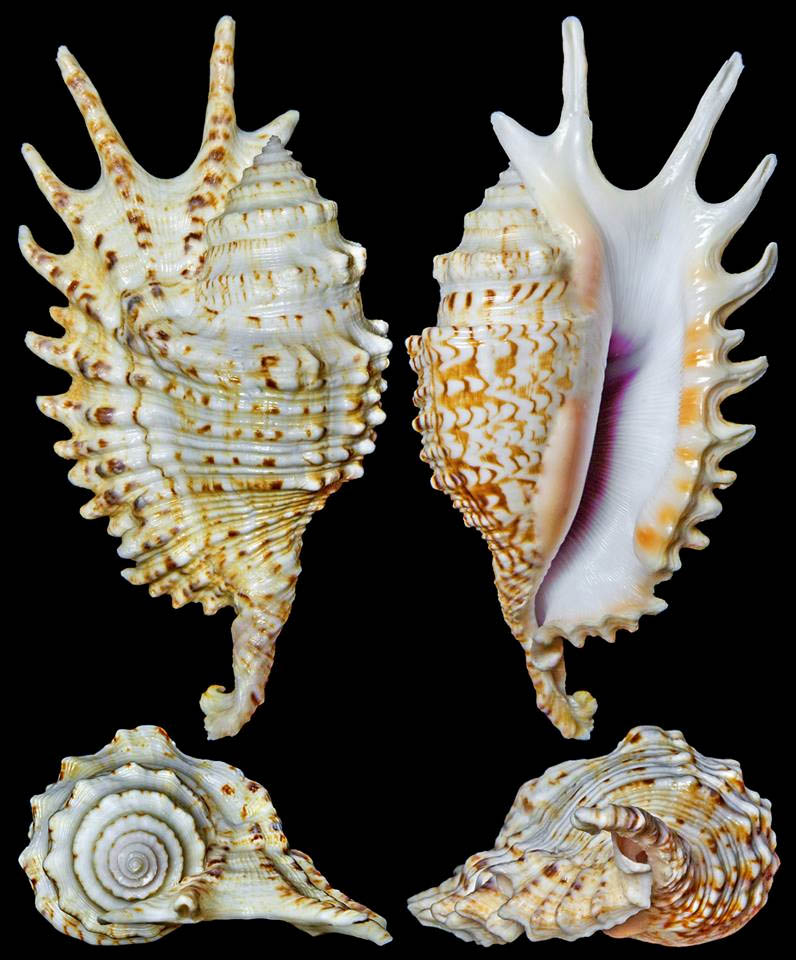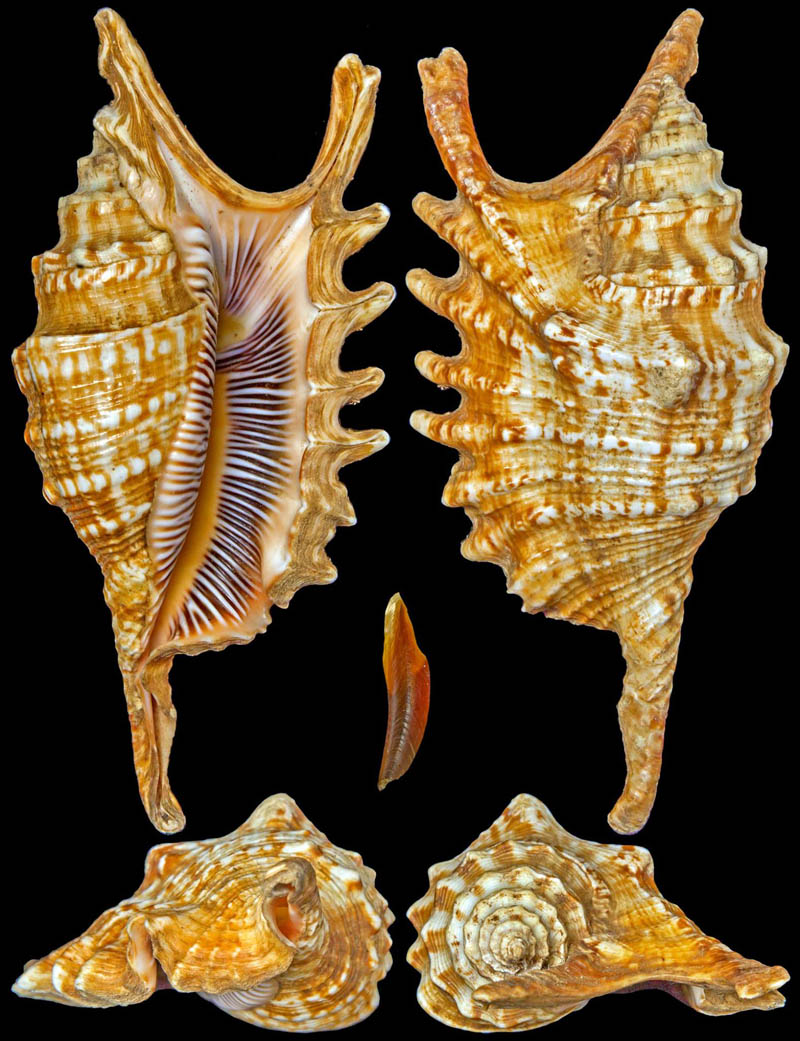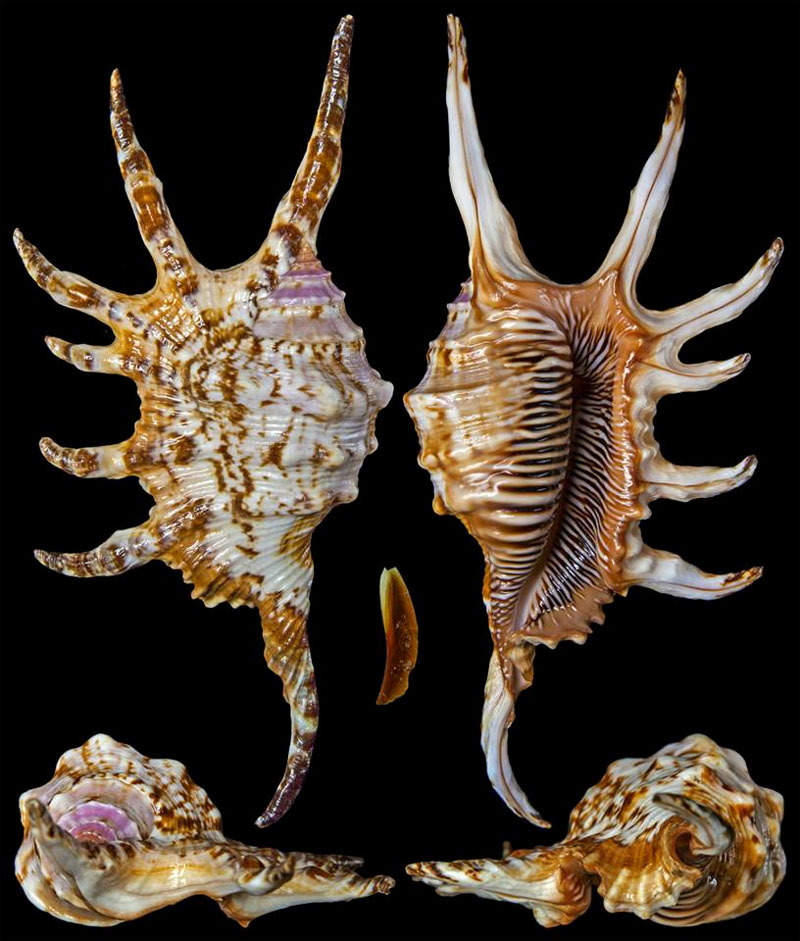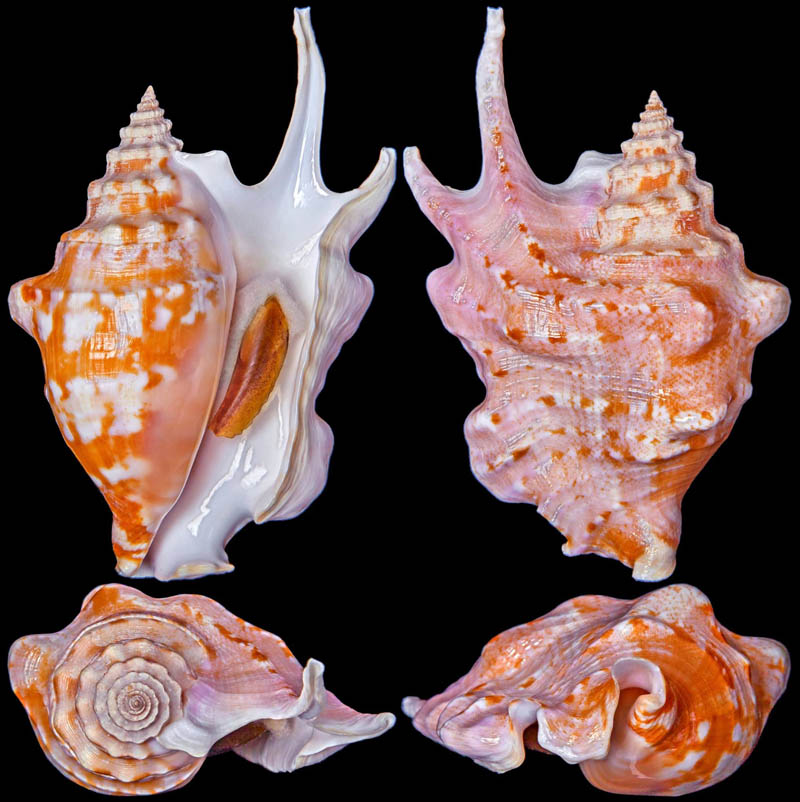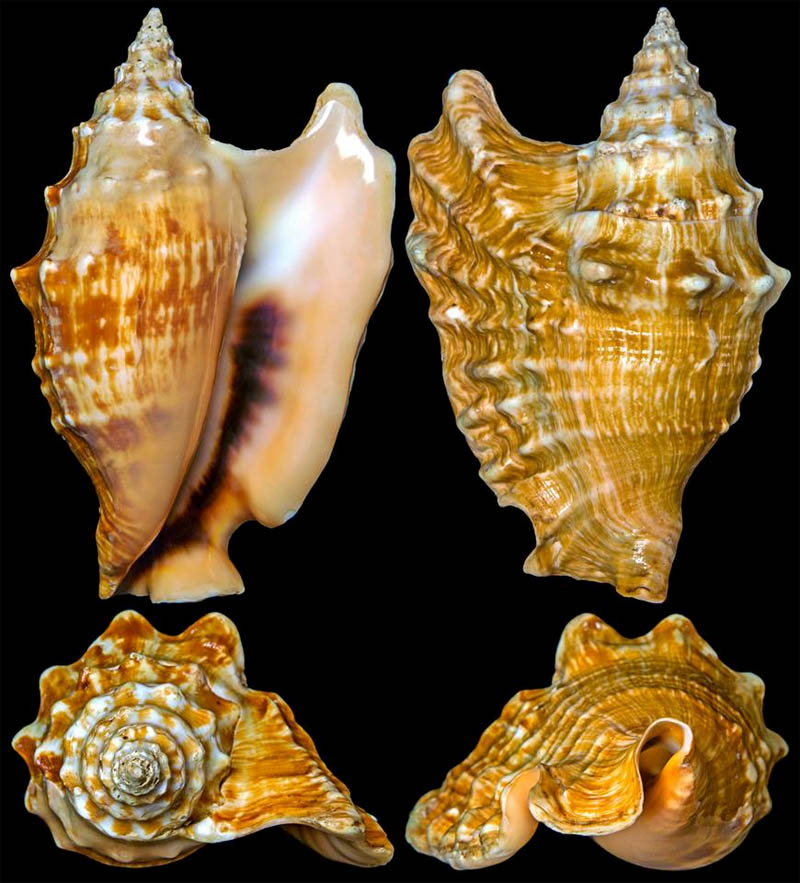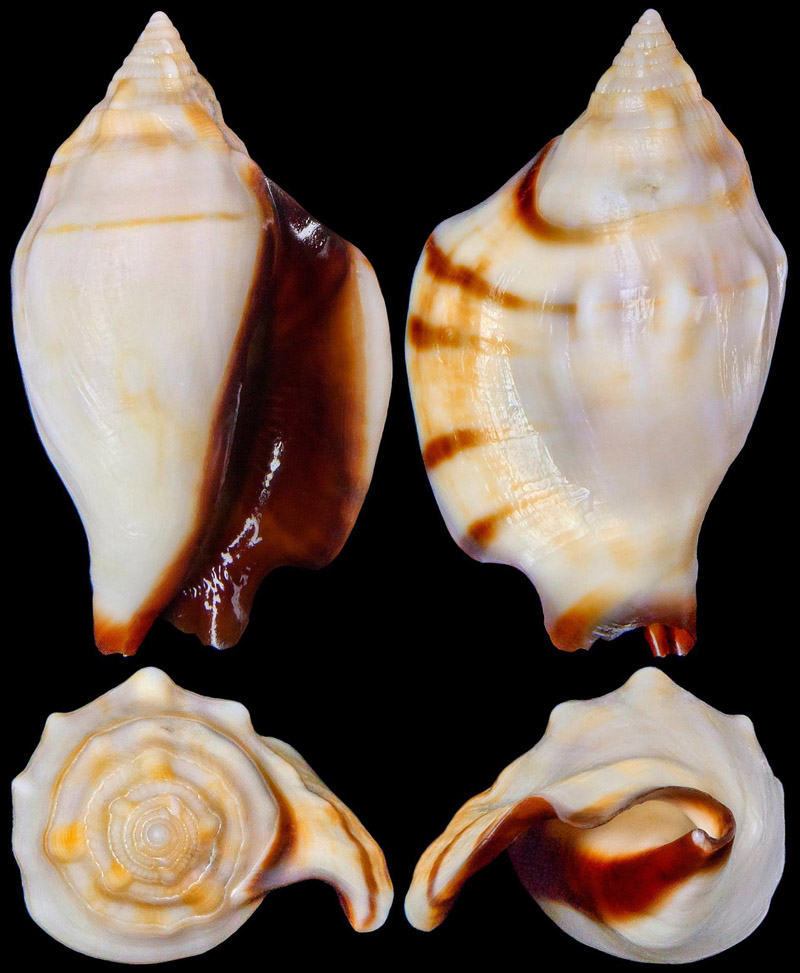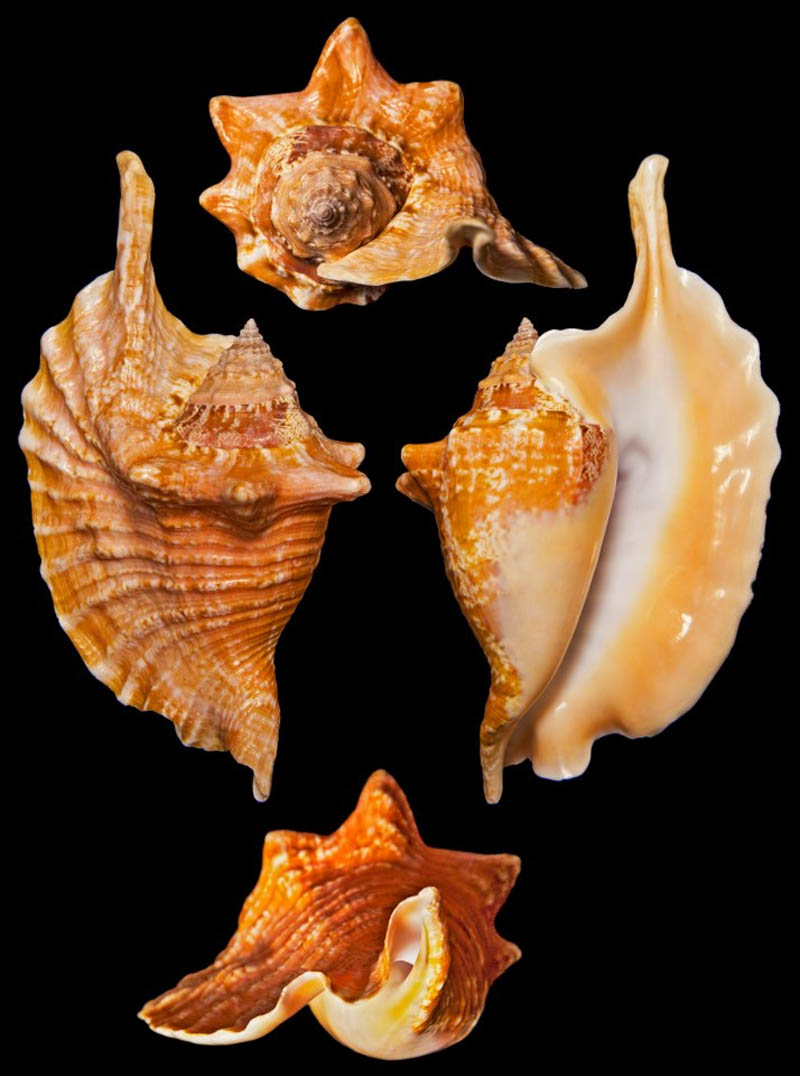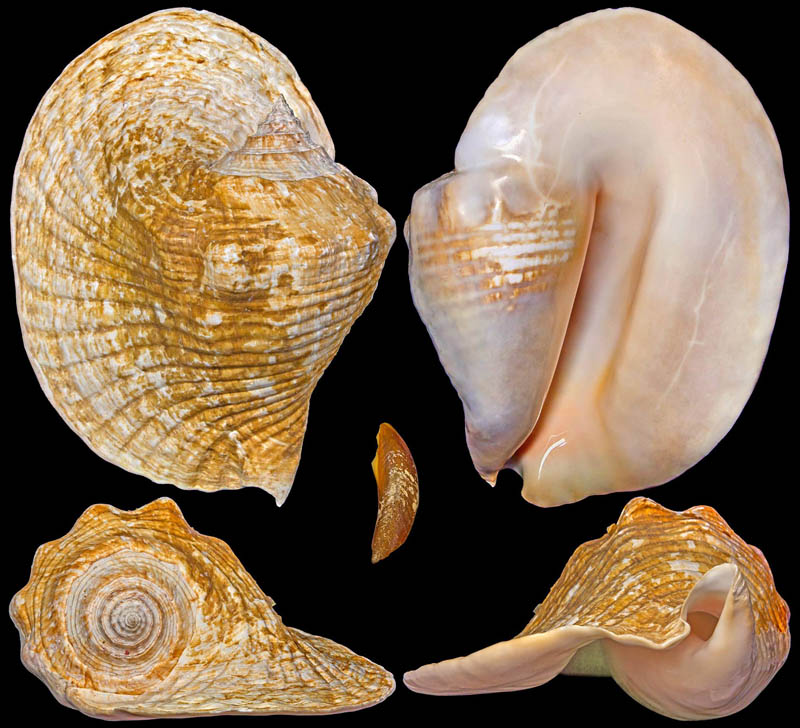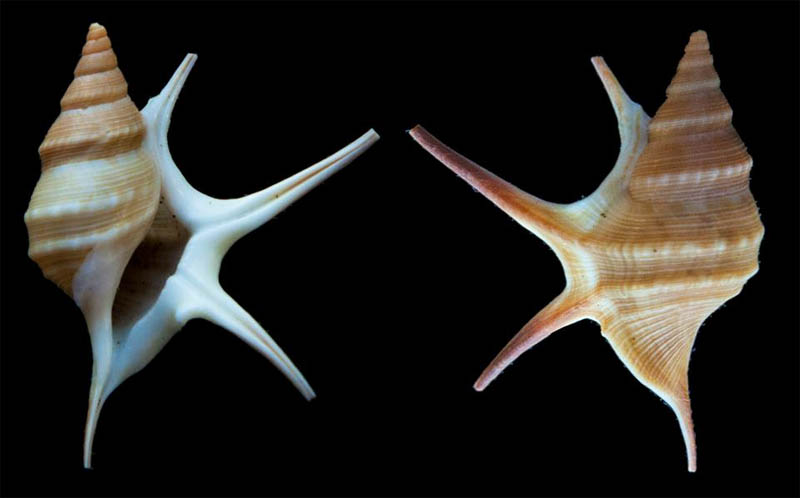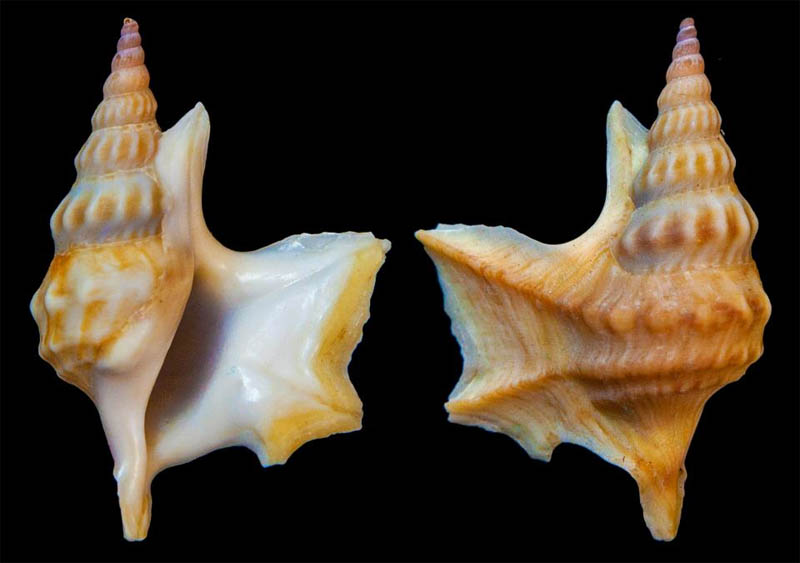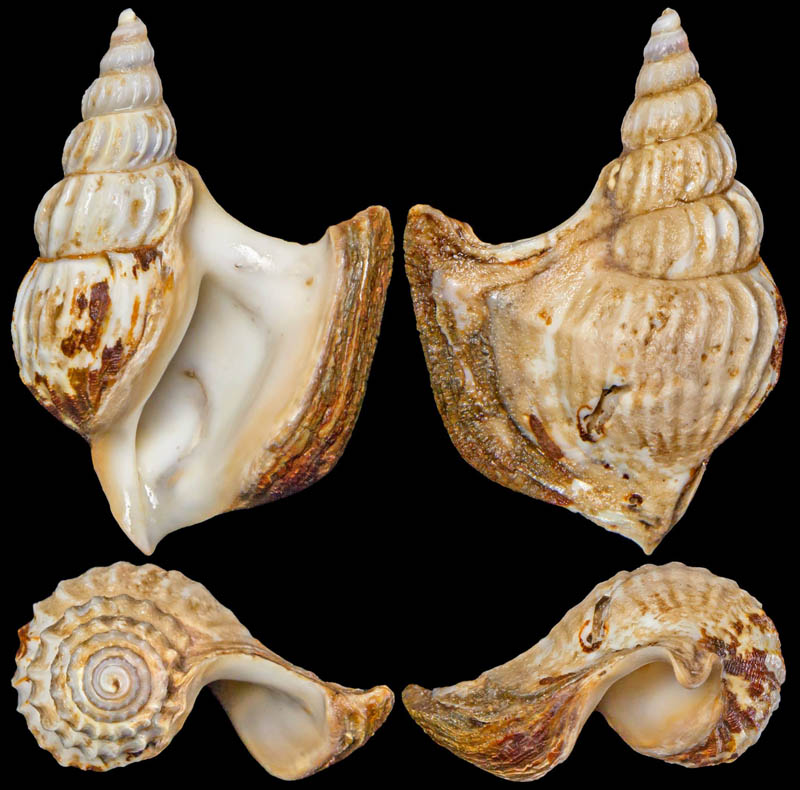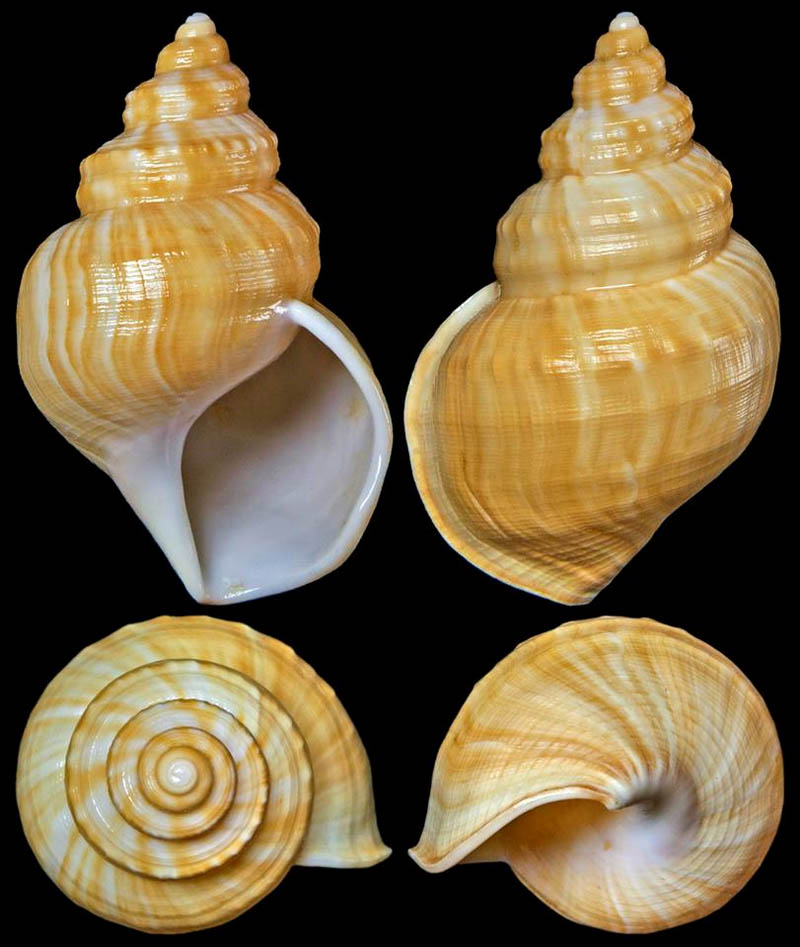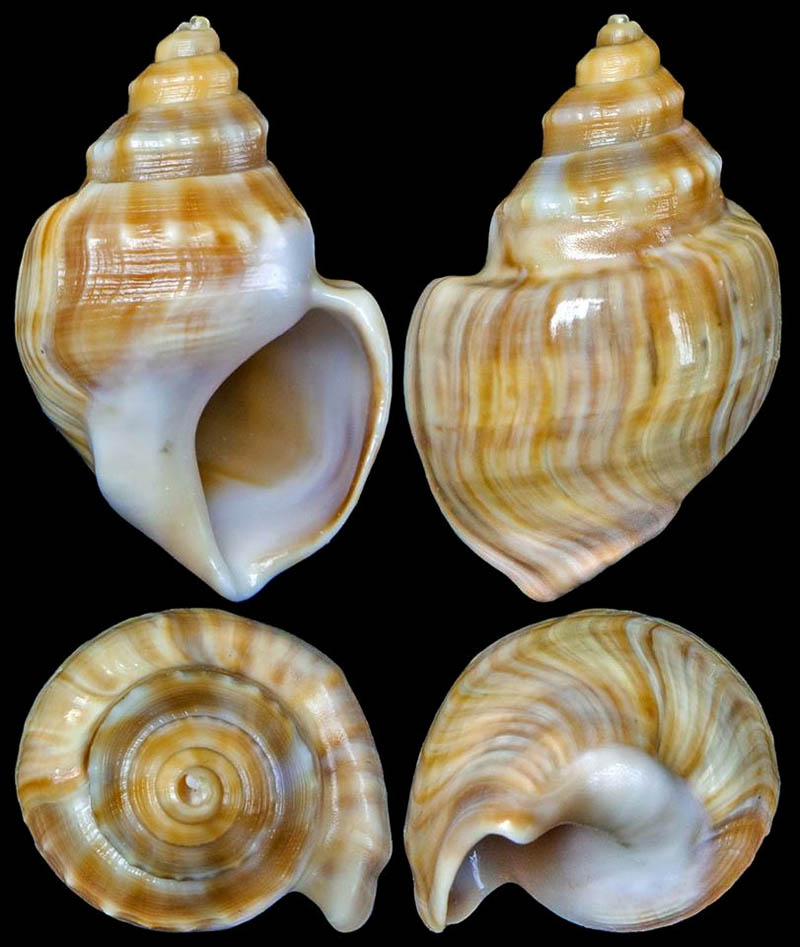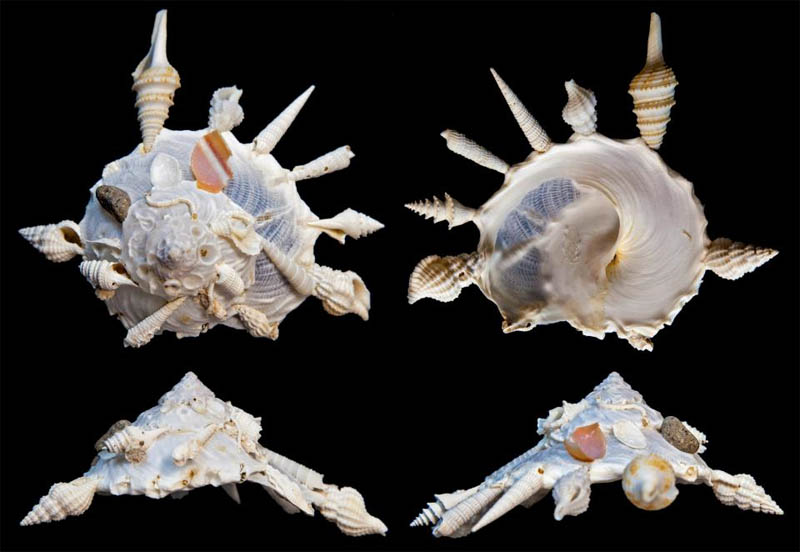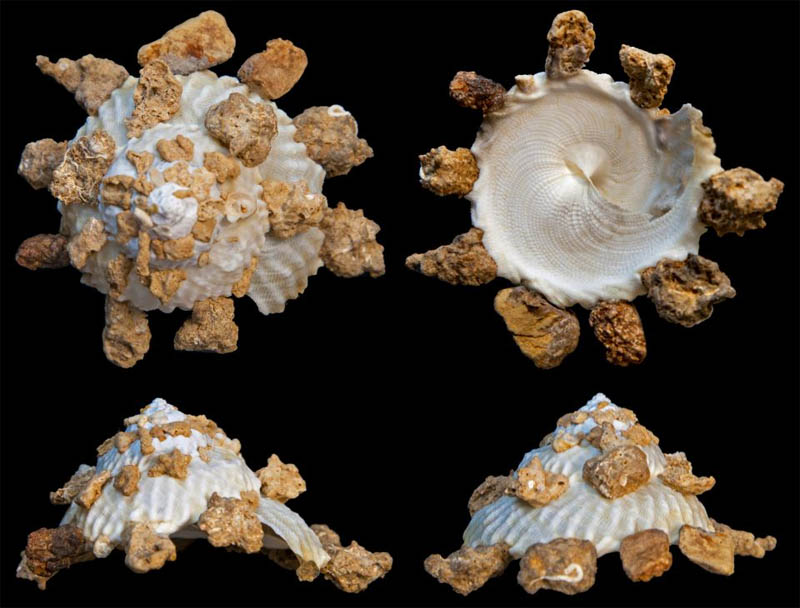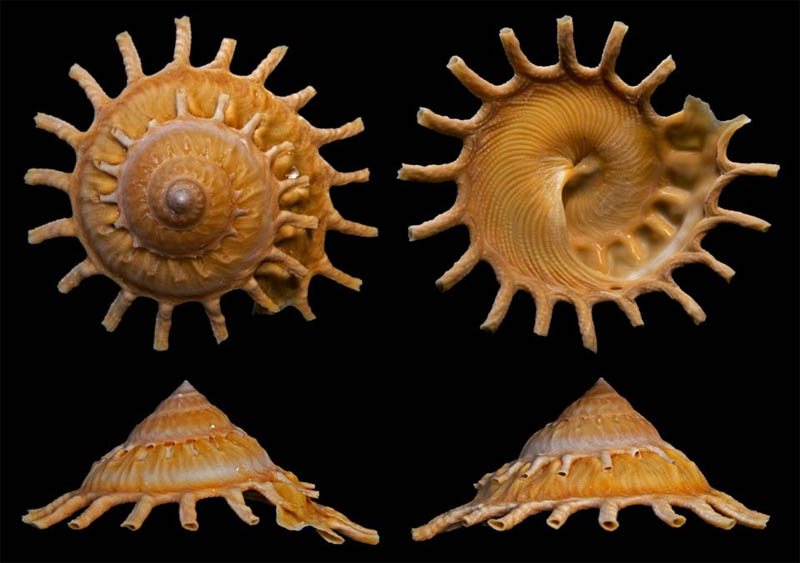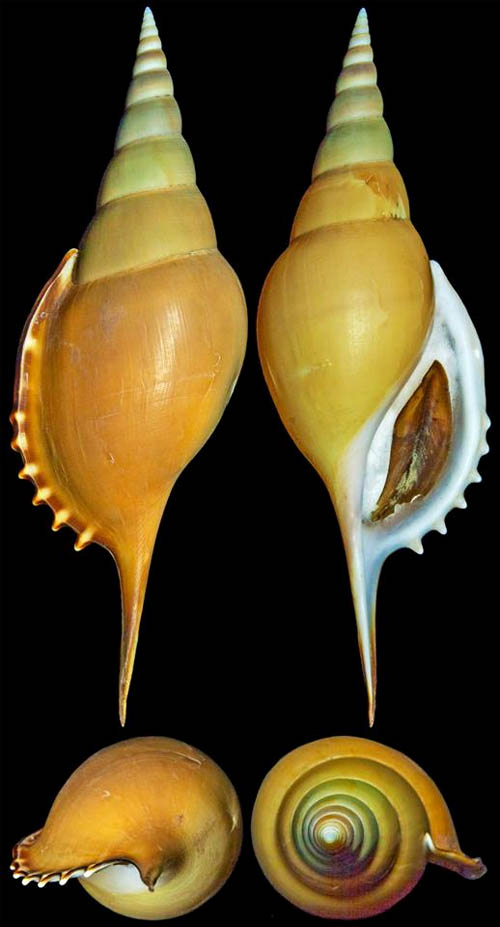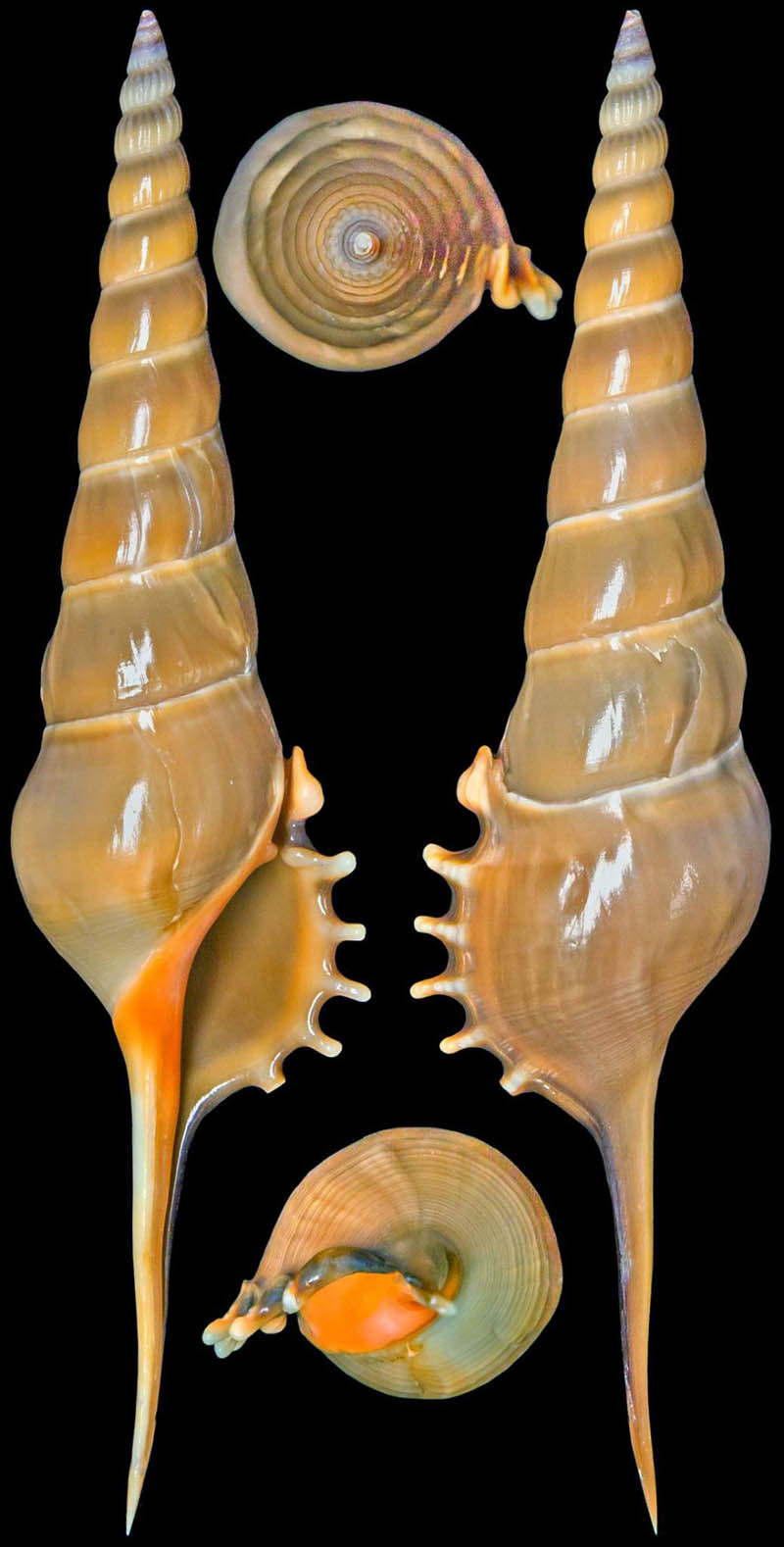|
edit SideBar
|
Chong Chen
from his collection
Ophioglossolambis violacea (Swainson, 1821); Mauritius Island, Indian Ocean; 121 mm; Coll. Chong Chen
- Comment Chong Chen: "The "Violet Spider Conch" is one of the most famous classic rarities of the conchology world, and perhaps the most beautiful of the spider conchs. Renowned for the deep violet hue inside the aperture, which distinguishes it from all other spider conchs. It is generally considered the most desirable strombid of the Indian Ocean, and was one of the fifty species chosen by S. Peter Dance in 'Rare Shells' (1969). Vast majority of specimens have been collected from Mauritius (especially Saint Brandon), and it appears to be endemic to the Mascarene Basin. Although it is probably not really a rare species in its locality, it is a rare species on the market even today due to limited access to its constrained habitat and the fact that shell collection is restricted by law in Mauritius. Development of digitation and length of siphonal canal highly variable. Immature specimens have unfilled digitation, lacks yellow spots on the outer lip, and has much weaker lirae in the aperture. Average shell length around 110-120 mm but giant specimens may approach or even exceed 140 mm."
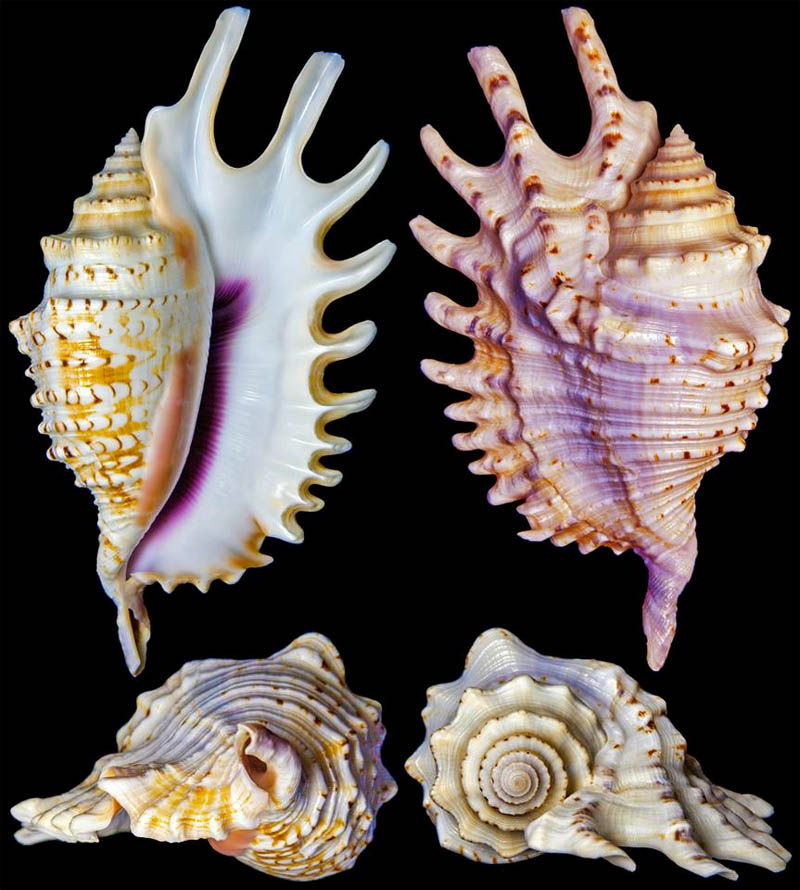 Ophioglossolambis violacea (Swainson, 1821); subadult; Saint Brandon Archipelago, northeast of Mauritius Island, Indian Ocean; 118,2 mm; Coll. Chong Chen
Ophioglossolambis digitata (Perry, 1811); Sanculo-Lumbo, Nampula Province, Republic of Mozambique, Indian Ocean; -5~10 m, dived; 128.5 mm; 2006; Coll. Chong Chen
- Comment Chong Chen: "The "Elongate Spider Conch" is a very attractive spider conch with alternating dark/light bands in the aperture, endemic to western Indian Ocean ranging from Kenya to Mozambique to Réunion. Although there are some historical distribution records from Philippines and Samoa in the Pacific Ocean, the credibility of these is negligible. The nominal form dominant in mainland/Madagascar is common but there is a form O. digitata f. crocea (Reeve, 1854) which is rather rare on the market. O. digitata f. crocea is the dominant form in Mauritius/Mascarene Basin and very uncommon outside that region; quite different from the nomial form in having a flattened and much wider whorls and a much shorter, compressed spire as well as longer digits. This species is generally variable in digitation, but can usually be easily identified by the most posterior digit being forked, in combination with its aperture pattern. It is a herbivorous gastropod inhabiting sandy and rubbly bottoms of shallow water around -5~30 m in depth. Typical shell length around 120 mm but gigantic specimens are known to exceed 180 mm. Previously placed in genus Lambis, it is now the type species of the recently erected genus Ophioglossolambis, its only congener being the famous rarity O. violacea (Swainson, 1821)."
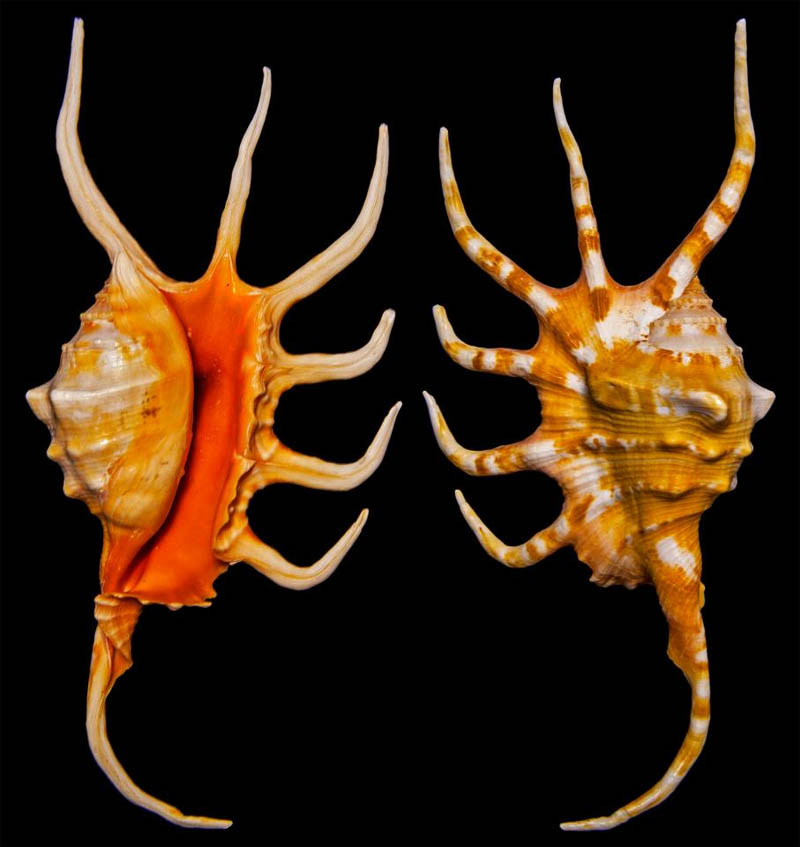 Lambis crocata (Link, 1807); Philippines Islands; 135 mm; Coll. Chong Chen
Lambis robusta (Swainson, 1821); Pueu, east coast of Tahiti Island, Society Islands, French Polynesia, South Pacific Ocean; -15 m, scuba dived; 130.4 mm; Coll. Chong Chen
- Comment Chong Chen: "The "False Spider Conch" is a bizarre spider conch endemic to Southeast Polynesia, characterised by the black tips on digits. It lives on sandy or coral rubble bottoms in shallow water around -10~30 m depth, and is a herbivore feeding mainly on algae and other organic particles. A locally uncommon species, it is rather rare on the market due to its restricted range. It is usually well disguised with overgrowths in habitat and difficult to find. Like all spider conchs it has very strong foot and is capable of jumping action. Average shell length around 130 mm, giants may exceed 150 mm. Most similar to Lambis scorpius (Linnaeus, 1758) and Lambis indomaris Abbott, 1961, but is easily distinguished from them by the much less "wavy", less curved digitation, and the black digit tips."
Sinustrombus taurus (Reeve, 1857); Roco Island, Marshall Islands, Micronesia, North Pacific Ocean; 93.5 mm; Coll. Chong Chen
Sinustrombus taurus (Reeve, 1857); Roco Island, Marshall Islands, Micronesia, North Pacific Ocean; 93.5 mm; Coll. Chong Chen
- Comment Chong Chen: "The "Bull Conch" is a striking classic rarity among the strombids characterised by two posterior spines; it is one of the most coveted conchs of the Pacific Ocean and also one of S. Peter Dance's 50 "Rare Shells" (1969). Originally described from the collection of Sir David Barclay who kept the then unique specimen in personal collection until his death, and it remained unique for more than a century until its re-discovery in the Marshall Islands by R. C. "Dick" Willis. Locating its home ground was difficult because when Lovell Augustus Reeve described it he misinterpreted the locality as 'Amirante Islands', part of Seychelles in the Indian Ocean; the actual locality appears to be Admiralty Islands in the Pacific Ocean which is much more likely. It is still rare today, mainly known from the Marshall Islands and Mariana Islands. A herbivorous gastropod, it is usually found on sandy to rubbly bottoms of moderately shallow water around -5~50 m in depth. Often found in pairs or threes, rarely one may encounter a large 'herd' which is presumably a mating behaviour (known from many strombid species); and 'herds' may contain 50 or more individuals. Usually a rough species with much of the shell encrusted or corroded or damaged by cap shells and worm shells; specimen grade shells are difficult to find. A very heavy shell for its size, its typical shell length is around 90 mm but giants are known to exceed 130 mm."
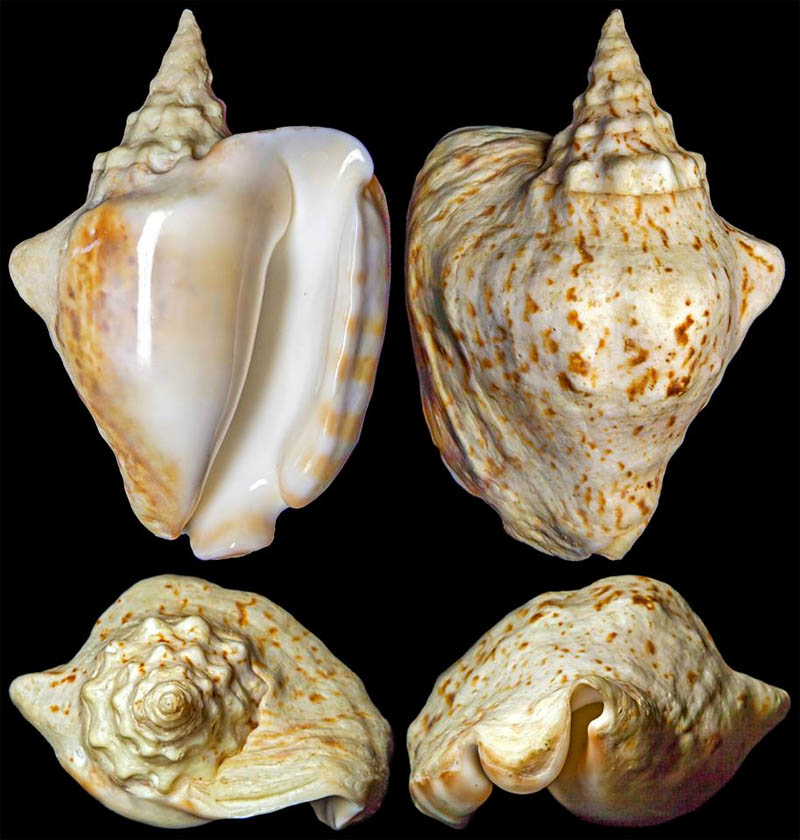 Thersistrombus thersites (Swainson, 1823); New Caledonia, Melanesia; 153,1 mm; Coll. Chong Chen
- Comment Chong Chen: The "Thersite Conch" is a rather rare strombid from Central and West Pacific. This species has extremely thick shell for its size, and the large specimen depicted here weighs 500 g. Most specimens have very corroded spire and dorsum, and specimens preserved in good quality are scarce.
Tricornis oldi Emerson, 1965; Ras Hafun, Bari Region, Puntland State, Somalia, Indian Ocean; 113 mm; 1988; Coll. Chong Chen
- Comment Chong Chen: The "Bill Old's Conch" is one of the greatest collector's items in Strombidae. Characterised by a chocolate stripe inside the apertute, it is endemic to Somalia and Oman where it is rarely found in shallow water. It was named after Bill Old (then scientific assistant at AMNH), probably the first person to notice its scientific novelty, by his supervisor Dr William K. Emerson. It is very variable in lip development and most specimens are quite worn. Perfect specimens are still very scarce even today.
Barneystrombus kleckhamae (Cernohorsky, 1971); Mataput, Rabaul, East New Britain Province, New Britain Island, Papua New Guinea, 47,5mm; Coll. Chong Chen
- Comment Chen: "The exquisite "Kleckham's Conch", with its striking 'black mouth', is a much celebrated rarity among strombids. The dark aperture extends to the dorsal face of the anterior extremities, its intensity increases with maturity though this does also vary among individuals. In addition, the four dark lines on the dorsum is another important characteristic (though not absolutely always present); the most anterior of the four usually stretches across the entire whorl. It has a very restricted range in the Western Pacific, known only from Papua New Guinea and Solomon Islands. The holotype is a subfossil specimen taken from pumice deposits of Matupi Island near Rabaul (New Britain, Papua New Guinea) which contains many molluscs presumably deposited during the volcanic uplift in 1937, in the major eruption of Mutapi volcano. In fact, vast majority of the specimens offered on the market are subfossil specimens from the Rabaul Bay; such subfossils were once only uncommon but appears to have become more scarce recently. Fresh specimens are very rare even in dead-collected condition, live-taken specimens are extremely rare. Supposedly decades ago some specimens were dredged live in the Solomon Islands, and more recently a few have also been live-taken in Papua New Guinea. Presumably a herbivorous gastropod feeding mostly on algae, the few live-taken specimens have been collected around a depth of 100~110m on rubble. Typical shell length around 45mm, very large specimens approaches 55mm. It is named in honour of Mrs. Marjorie Kleckham, Port Moresby, Papua, who first recognised that it is a new species. The closely related Barneystrombus boholensis (Mühlhäusser, 1981), mainly known from around Bohol Island in the Philippines where it is quite common, was originally described as its subspecies but is now generally considered to be a separate species in its own right. The shell of B. boholensis is larger (average around 60mm, largest specimens exceeding 75mm) and has a very different pattern on the dorsum without the black lines. Unlike B. kleckhamae the anterior extremities (especially the dorsal face, including the anterior siphonal canal) are not black in B. boholensis."
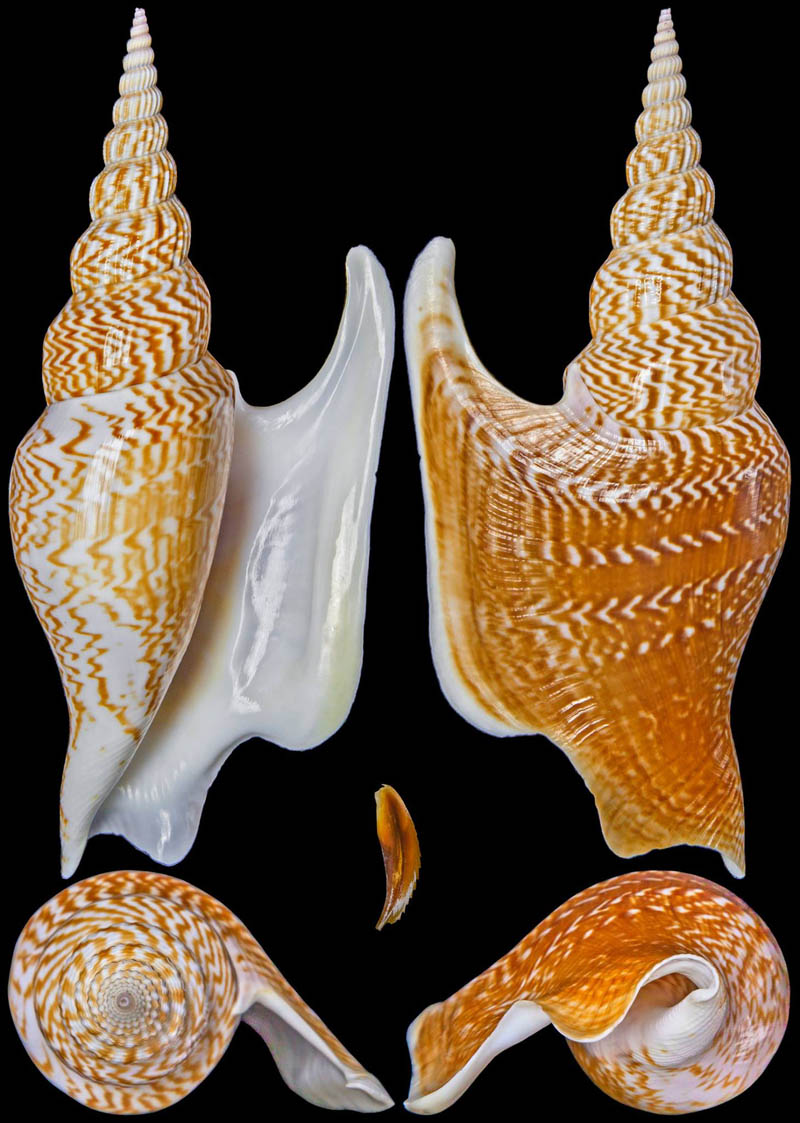 Mirabiblistrombus listeri (Gray, 1852); -80~120 m, Trawled, Between Koh Racha Islands, Phuket Island, Thailand and Mergui Archipelago, Myanmar; 133.4mm; 1980s-1990s; Coll. Chong Chen
- Comment Chong Chen: "The "Lister's Conch" is a magnificent and famous strombid with a noteworthy history. The first known specimen belonged to John Tradescant of London in the early 17 th Century and was illustrated by Martin Lister (its namesake), which Thomas Gray used in his description making it the holotype. It remained unique for a short while but Mrs de Burgh, one of two famous British collectors of the time, acquired another specimen and not knowing about Gray's description had Sowerby II describe it as Strombus mirabilis (1870). Until more specimens turned up in the second half of 20 th Century it remained elusive and one of the most sought-after shells of all, and was thus listed as one of S. Peter Dance's 50 "Rare Shells" (1969). As it is quite distinctive from all other strombids its taxonomic placement has been controversial, and in 1998 Gijs Kronenberg erected a new monotypic genus for it: Mirabilistrombus; the name of which is sublimed from that well-known synonym by Sowerby II. The holotype is supposed to be deposited in the Hunterian Museum, Glasgow, Scotland; but hwow John Tradescant acquired it in the first place is enigmatic till this day. With deep trawling and dredging it is only uncommon today, although specimens with original operculum is quite scarce. A herbivorous gastropod inhabiting sandy bottoms of moderately deep water around -40~150 m, its distribution range is from northwest Indian Ocean to Bay of Bengal and recently extended to Arafura Sea; most specimens originate from either Myanmar or Thailand. It is a little-varied species and the typical shell length is around 130 mm, very large specimens may exceed 160 mm."
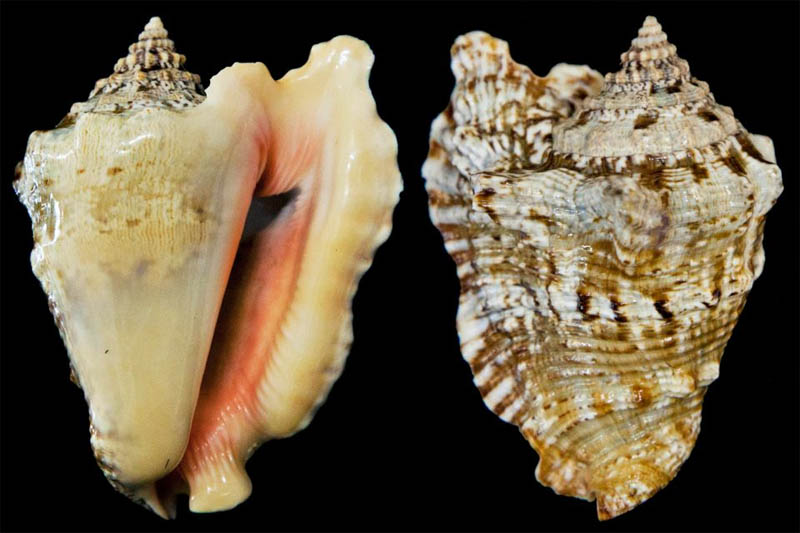 Lobatus raninus (Gmelin, 1791); Florida, USA; 73,6 mm; Coll. Chong Chen
Lobatus gallus (Linnaeus, 1758); Brazil; 141 mm; Coll. Chong Chen
- Comment Chong Chen: Commonly called the "Rooster-tail Conch", this species exhibit a great variety of colours from purple to gold to dark brown.
Lobatus goliath (Schröter, 1805); Natal, Rio Grande do Norte, Brazil; Dived; 305.0 mm; Coll. Chong Chen
- Comment Chong Chen: "With an average shell length of 300 mm and a staggering record size of 380 mm, the aptly named "Goliath Conch" is the largest strombid species alive today. A herbivorous gastropod living in shallow water down to about -50 m deep, it is found mostly on sandy bottoms and primarily feeds on algae and seagrass. Although generally considered to be endemic to Brazil, recent findings reported the presence of two small populations in Barbados as well, presumably recently settled through a rare dispersal event. Its handsome shell is distinctively adorned with a very extensively flared outer lip and thin layer of golden brown periostracum. During recent years it has been moved around a few genera as part of the extensive revision of the family Strombidae, including Strombus, Eustrombus, Titanostrombus, before finally settling in Lobatus, its current genus. Though a locally common species in Brazil, it is not easy to acquire a large and operculated specimen with a perfect, unfiled lip."
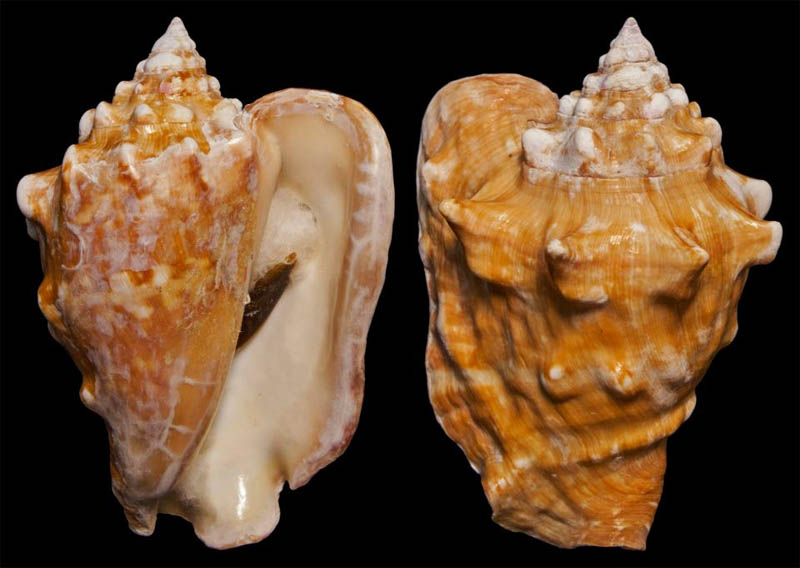 Persististrombus latus (Gmelin, 1791); Cape Verde Islands, Republic of Cabo Verde, central Atlantic Ocean; 115 mm; Coll. Chong Chen
Aporrhais pesgallinae Barnard, 1963; Guinea-Bissau; 38 mm; Coll. Chong Chen
Aporrhais pespelecani (Linnaeus, 1758); Portugal; 40,1 mm; Coll. Chong Chen
Arrhoges occidentalis (Beck, 1836); -100 m, trawled off Chebucto Head, Nova Scotia Province, Canada; 53.0 mm; Coll. Chong CHen
- Comment Chong Chen: "The "American Pelicanfoot" is graceful aporrhaid and the only extant species native to the western Atlantic, ranging from Greenland to Nova Scotia, Canada to North Carolina, USA. It is also the only extant species in the genus Arrhoges, although many do not consider this a full genus and still place it in Aporrhais. Compared to the other living aporrhaids its outer lip is simple with only a single projection, while others have multiple spines. It is a herbivorous and detritivorous species feeding on microalgae and detritus, and inhabits sandy to muddy bottoms of a rather wide bathymetric range around -10~400 m deep. It is a rather rare species in the shell trade, especially live collected specimens of good quality as it is usually a rough shell; most specimens are trawled off Atlantic Canada. It is very variable in spire height; specimens with slender spire bearing relatively few axial ridges has been described as f. mainensis (Johnson, 1930), while those with very high spire has been named f. labradorensis (Johnson, 1930). Typical shell length around 50 mm, very large specimens may exceed 65 mm."
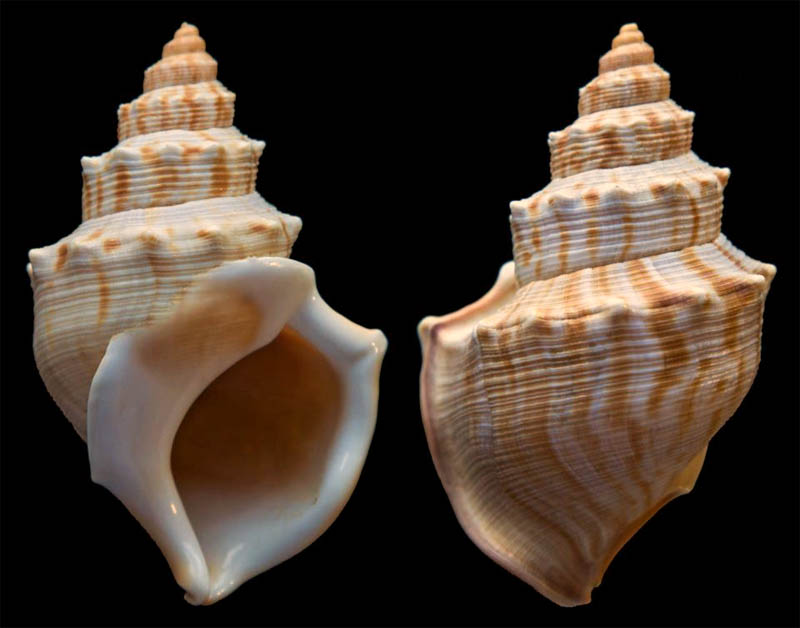 Struthiolaria papulosa (Martyn, 1784); New Zealand; 2009; 79,5 mm; Coll. Chong Chen
Pelicaria vermis (Martyn, 1784); Omaha, New Zealand; -30 m, dredged; 46 mm; Coll. Chong Chen
- Comment Chong Chen: "The "Small Ostrich Foot" is a member of the ostrich foot family endemic to a small part of New Zealand ranging from the Cook Straight to North Island. It is the only extant species in genus Pelicaria (although a few subspecies exist) and many fossil specimens are known from Pliocene. It gains its common name from the fact that it is smaller than the closely related "Large Ostrich Foot", Struthiolaria papulosa (Martyn, 1786). It uses its large gill for filter feeding and is locally not uncommon from low tide down to depths around -100 m. The shown specimen is slightly immature, mature specimens have thickened inner and outer lip and may exceed 55 mm in shell length."
Tylospira scutulata (Martyn, 1784); Trawled off Coffs Harbour, New South Wales, Australia; 31.2 mm; Coll. Chong Chen
- Comment Chong Chen: An endemic species of Eastern Australia, this is an example the of "Ostrich Foot" family, a very small family of about five species virtually restricted to Australia, New Zealand, and Southern Ocean. This species is the only extant species in genus Tylospira and is unusual in the family in having a very smooth shell. It relies on filter-feeding with its gills for food and lives in sandy bottoms around the depths of -5~90 m. Uncommonly offered on the market but it is in fact locally common. Average size about 40 mm, giants may exceed 60 mm.
Xenophora pallidula (Reeve, 1842); Philippines Islands; 103 mm; Coll. Chong Chen
Xenophora granulosa Ponder, 1983; Philippines Islands; 88,3 mm; Coll. Chong Chen
Stellaria solaris (Linnaeus, 1764); Philippines Islands; 105,3 mm; Coll. Chong Chen
Rostellariella martinii (Marrat, 1877); Tayabas Bay, Luzon Island, Quezon Province, Calabarzon Region, Philippines Islands; 158 mm; Coll. Chong Chen
- Comment Chong Chen: The "Martini's Tibia" is an elegant, thin-shelled tibia. One of S. Peter Dance's fifty "Rare Shells" (1969), this species was considered very rare until late 20 th century. It inhabits rather deep water of about 100~200 m and has a distribution from Taiwan to Borneo.
Tibia melanocheilus (Adams, 1854); -80~120 m, Trawled by Thai trawlers, Pulau Raja, northeast of Sumatra Island, Indonesia; 127.2 mm; Coll. Chong Chen
- Comment Chong Chen: The "Dark-Mouthed Tibia" is a peculiar rostellariid strongly resembling its sister species Tibia fusus (L., 1758) but has a dark brown aperture and yellowish brown parietal callus as opposed to white in T. fusus. The shell is also usually more compressed and squat, and the siphonal canal is also shorter than T. fusus. For some time it was treated as a subspecies of T. fusus, but now usualy accepted as a separate full species based on these differences. It lives burrowed in sand of shallow to moderate depths around -20~150 m, and is quite uncommon especially live-taken specimens in good condition. The distribution range is supposed to be from Sabah, Malaysia to as far as Bangladesh, but vast majority of specimens originate from around northwest Sumatra, Indonesia. Although the exact feeding habits of Tibia species is unclear, they are presumed to be herbivorous to omnivorous gastropods which swallow quantities of sand and digest algae and detritus within, as well as grazing on algae. Typical shell length around 130 mm, very large specimens may exceed 165 mm.
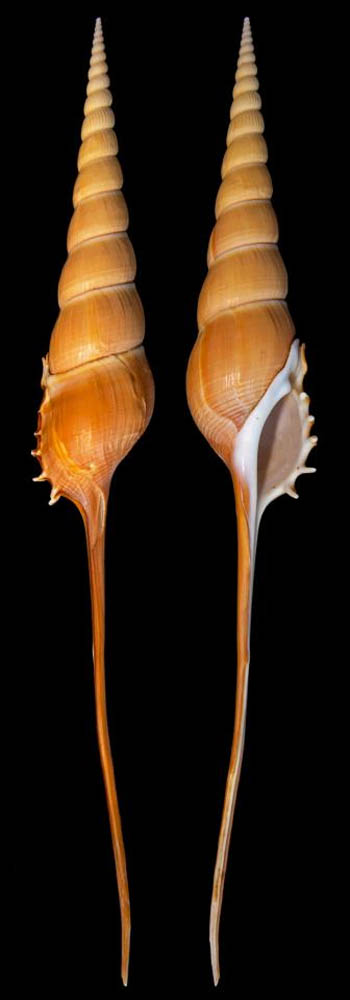 Tibia fusus (Linnaeus, 1758); Philippines Islands; 285 mm; Coll. Chong Chen
|

